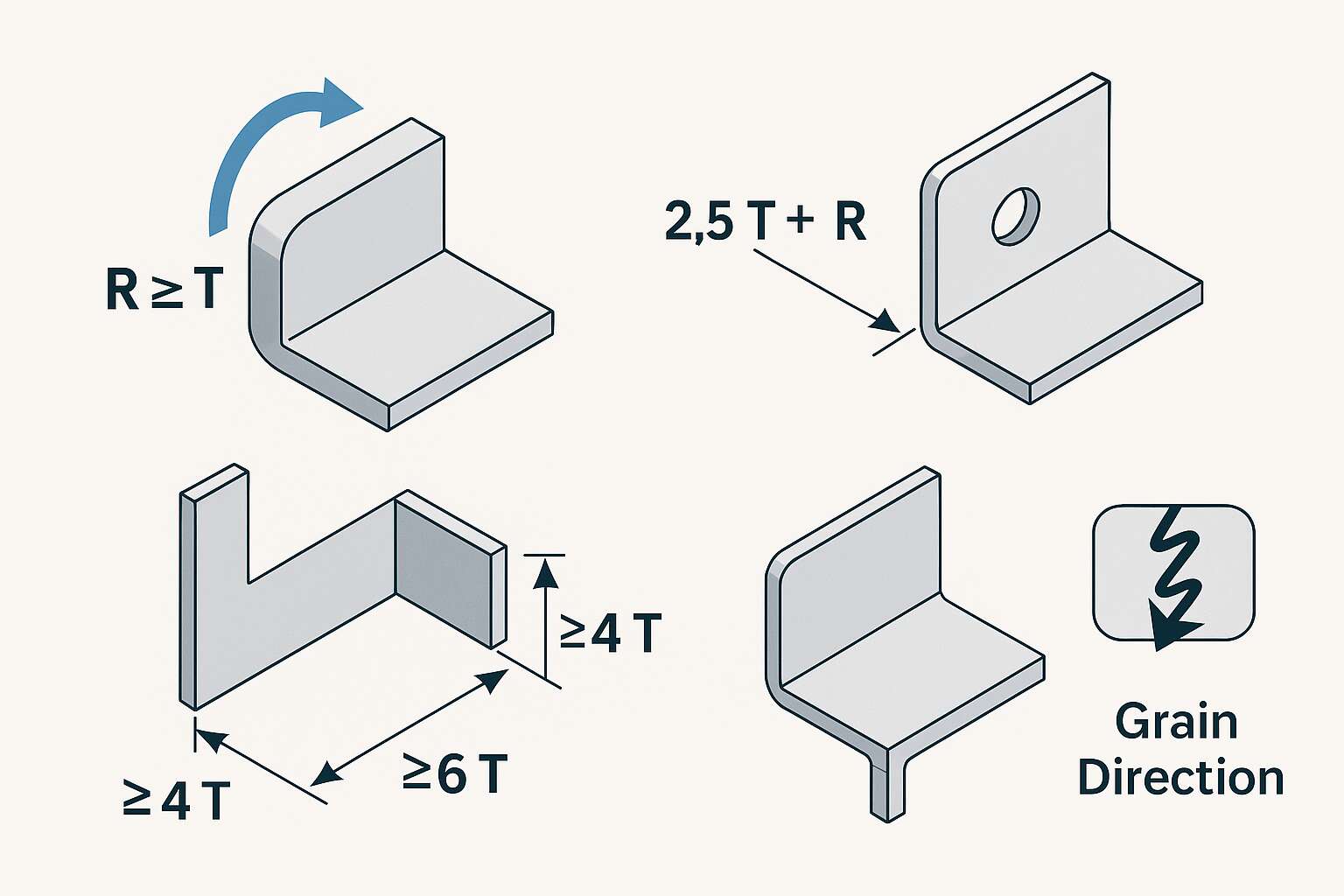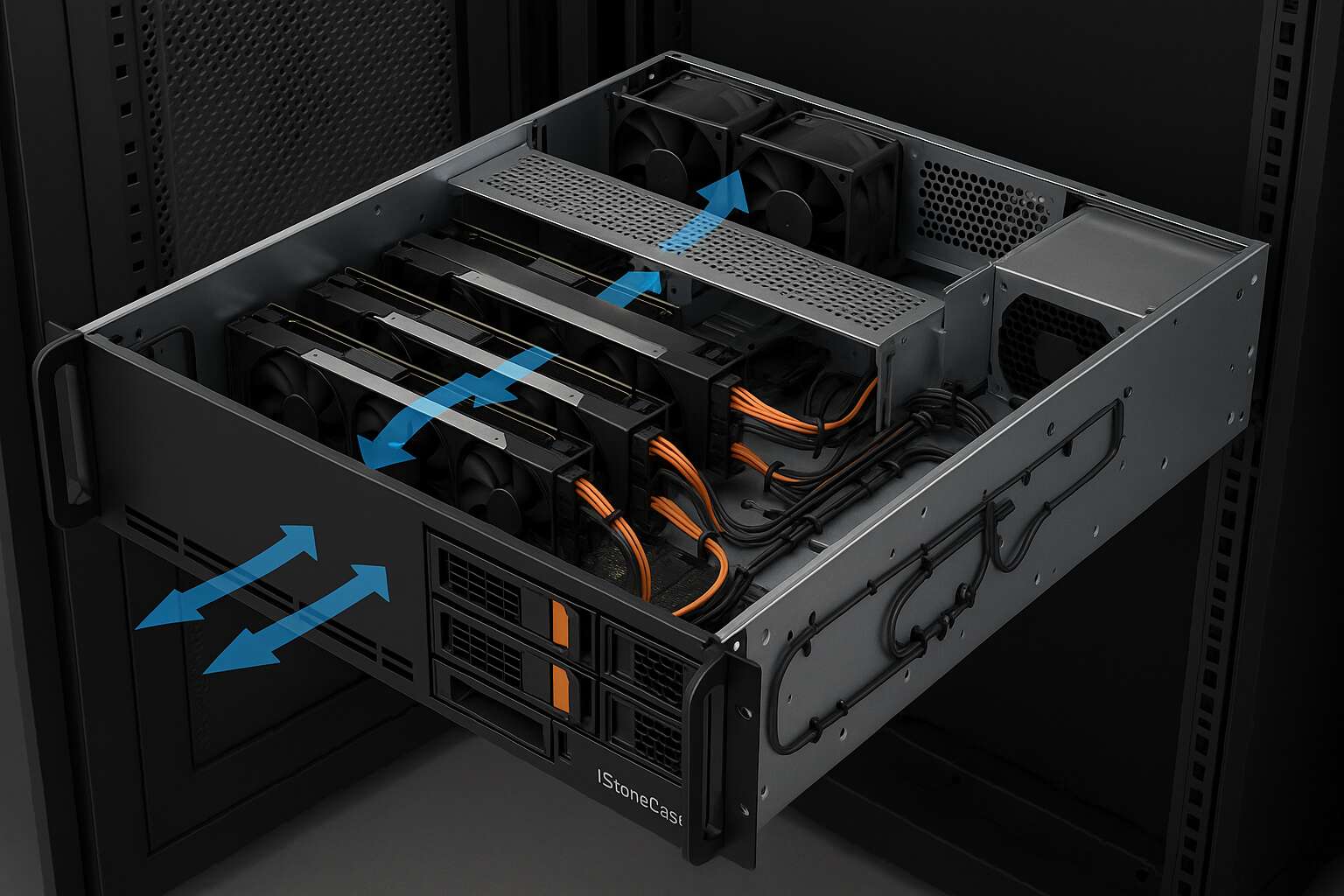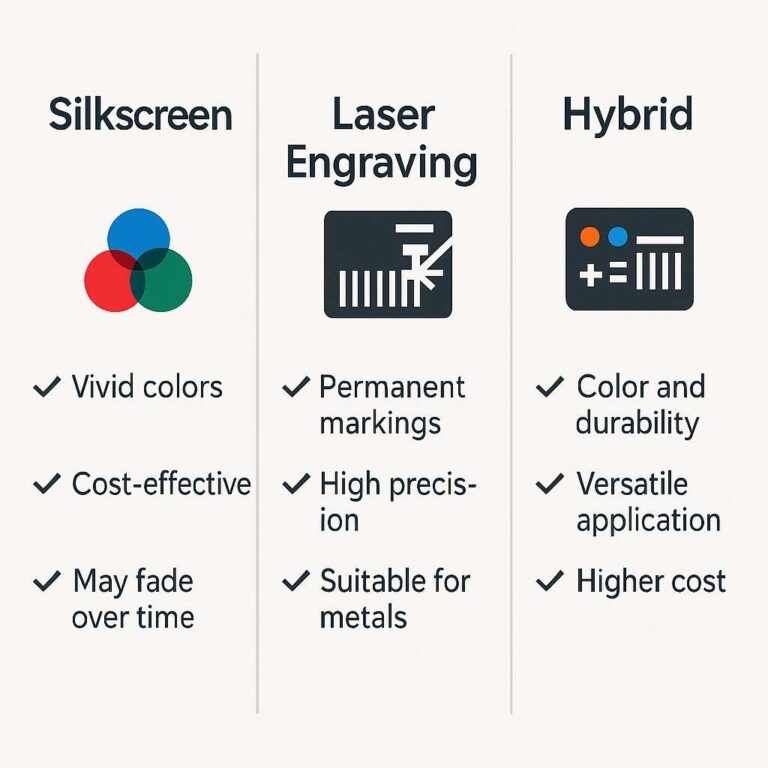From EVT to mass build without drama. Real rules, plain talk, zero fluff. And yes—tailored for GPU and server metal.
IStoneCase builds and customizes GPU/server cases and storage chassis for data centers, AI teams, and resellers. If you’re vetting a server rack pc case, a compact server pc case, a computer case server for edge sites, or an atx server case for lab clusters, this checklist keeps your prototype honest and your DFM clean.
Sheet-metal chassis prototyping: bend radius, hole-to-bend, flange length
Let’s start where most chassis projects fail—folds, holes, and flanges. Keep the physics simple:
- Bend radius: start at R ≥ T for carbon steel; R ≥ 1.5T for aluminum; R ≥ 2T for stainless. For hard tempers (e.g., 6061-T6), be conservative—R ≥ 4T saves rework.
- Hole-to-bend: lock ≥ 2.5T + R. Closer? Expect banana holes and tool witness.
- Flange length: aim ≥ 4T (many shops prefer ≥ 6T). Shorter flanges chatter, slip, and scrap.
- Bend relief at corners: tiny notches, huge wins. Prevents tearing and keeps ±1° bend accuracy realistic.
- Grain direction: run grain perpendicular to bend lines where you can. Less cracking, less springback.
Why so strict? Because once you ramp from laser/brake to stamping/automation, the metal “memory” gets loud. Fixing fundamentals early beats chasing ghosts later.
DFM review checklist for GPU server chassis & rackmount case
Thermals and serviceability make or break uptime:
- Air path: enforce cold-to-hot flow with sealed partitions. High-density GPUs? Add air shrouds and blanking panels, or the middle cards cook.
- Pressure budget: choose fans for static pressure, not just CFM. Long filters and dense fin stacks need grunt.
- Cable routing: reserve tie-down points and grommets. “Just tuck it” turns into field RMA’s—dont do it.
- Rail kit & CG (center of gravity): confirm with a loaded unit (PSUs + GPUs + drives). Rails must not bind at 50–80% extension.
- EMI & ground: mask paint on bond pads, use star washers where needed, keep door finger-stock continuous.
IStoneCase ships rackmount case and chassis guide rail solutions that already bake in those guardrails, so you aren’t reinventing them on every SKU.
Fasteners & assembly for server pc case / computer case server
You want repeatable assembly at scale:
- PEM hardware > loose nuts. Plan keep-outs for the anvil.
- Tab & slot for self-location. It speeds fixtures and keeps hole stacks honest.
- Min hole sizes: match standard punches; odd sizes slow the press brake line.
- Welding: use it for structure, not as the main “fastener.” Heat moves metal and eats time.
- Accessibility: field techs need tool clearance with gloves on. If a captive screw hides under a cable, it will strip.
Small tweak, big win: switch a hidden M3 to a PEM with a short standoff. Suddenly the lid drops in square, first time, every time.

Surface finish, EMI, and grounding in server rack pc case
Finish choices aren’t just about looks:
- Powder coat adds thickness—leave clearance on slides, latches, and plug-in bezels.
- Conductive paths: specify masked pads for ground straps and door fingers; otherwise you’re measuring millivolts and guessing.
- Cosmetics: define “show surfaces” vs “non-show.” Ops needs to know what matters, what doesn’t.
For NAS and edge boxes, a fine-texture powder hides dings from truck-to-rack abuse. For NAS devices and ITX builds, a light texture plus masked studs keeps ground continuity crisp.
From prototype to volume: process migration & QC gates
This is where programs either glide or trip:
- NPI cadence: EVT → DVT → PVT. Freeze metal rules by DVT. Freeze the BOM before PVT.
- K-factor / bend allowance: use your factory’s numbers in the flat pattern. “Generic K” is how brackets go short.
- Critical features: mark hole true-position to fans, PCIe keep-outs, PSU windows, rail locators. Those get tighter GD&T; the rest can breathe.
- Incoming checks: verify sheet lot, hardness, grain. Swapping coil lots mid-run changes springback, and then QA thinks your drawings lied.
- FAI & golden samples: keep one “no-touch” build for all future inspections.
IStoneCase’s OEM/ODM teams do this all day for GPU server case clusters and server pc case rollouts. You get consistent parts and fewer “why does Rev C not fit Rev B rails?” moments.
Buyer notes: when to pick a GPU server case or atx server case
You’ve got choices:
- High-density AI: choose a GPU-optimized enclosure with front-to-back airflow, high-pressure fans, and clear PCIe/fabric cable channels.
- General compute: an atx server case with hot-swap bays plus clean rail integration handles mixed loads well.
- Edge / wallmount: short-depth options with filtered intakes; watch for side-clearance on power and NICs.
- Lab / dev: ITX and short rack chassis for quick bring-up; keep panels tool-less to reduce “tinker” time.
For bulk orders and customization—branding, different bay maps, special rails—talk to IStoneCase early. ODM tweaks in EVT are cheap; in PVT they’re pain.
Data you can use: chassis prototyping & DFM rules of thumb
| Topic | Rule of thumb | Why it matters | Tighten when… | Source |
|---|---|---|---|---|
| Bend radius | Steel R ≥ T; Al ≥ 1.5T; SS ≥ 2T; hard temper ≥ 4T | Prevent cracks & ugly springback | Cosmetic edges or long flanges | Industry guideline; IStoneCase build standard |
| Hole ↔ bend | ≥ 2.5T + R | Keeps holes round post-bend | Holes key to rails/PSUs | Industry guideline |
| Flange length | ≥ 4T (prefer ≥ 6T) | Stable forming; less twist | Thin material or wide panels | IStoneCase shop notes |
| Bend relief | Add at corners; scale with T | Avoids tearing; holds ±1° | Thick stock; tight angles | Industry guideline |
| Grain direction | Grain ⟂ bend line | Reduces cracking | High bend angles; hard alloys | Industry guideline |
| Tolerances | Flat ±0.5 mm; hole ±0.2 mm; bend ±1° | Realistic process capability | Mates with rails/drives | IStoneCase QC |
| Surface finish | Account for coating thickness | Avoids interference on slides | Tight slot/latch fits | IStoneCase finish guide |
| Fasteners | Use PEM/captive; design keep-outs | Faster, repeatable builds | High service frequency | IStoneCase assembly SOP |
Note: “T” = material thickness. Values are starting points; confirm with your production line before committing.

Real-world scenario: cooling a dense computer case server with four GPUs
You’ve got 4× double-wide GPUs, a pair of 2.4 kW PSUs, and room for 8 drives. Classic hot box.
- Partition the chassis so the GPU zone doesn’t leak into the drive bay.
- Add a shaped air shroud so fans pull equally across each card. That middle GPU? It’s the trouble-maker.
- Use high-pressure fans, not just big CFM numbers.
- Keep cable plenum clear—drop SATA or power harness into a lower channel.
- Reserve masked ground pads under the shroud screws for continuity checks.
Build it in EVT, log temps at 50% and 100% load, and don’t chase single-point “hero” numbers (yea, I said it). You want trend stability across three units, not one lucky sample.
Mini DFM review table for rackmount & wallmount
| Checkpoint | Pass if… | Notes |
|---|---|---|
| Rails align | Rails glide with full load at 70% extension | Check center of gravity with drives installed |
| Door EMI | Finger-stock continuous + masked pads clean | Don’t paint over bond paths |
| Cable map | Tie-downs every 100–150 mm; no sharp edges | Add grommets near PSU cage |
| Service | Tools fit with gloves; top cover off in < 30s | Captive screws where possible |
| Coating | All sliding fits pass post-paint | Mask latch and slide interfaces |
Why IStoneCase for OEM/ODM and wholesale
- We design and build GPU server case platforms, server rack pc case lines, NAS devices, ITX, and rails for bulk orders.
- We customize: airflow kits, branding, bay maps, and mechanicals for your AI or database workloads.
- We support data centers, algorithm hubs, enterprises, SMBs, MSPs, research labs, and builders.
- We ship repeatable metal—because the rules above live in our fixtures, not just on a slide.
If you want the long version—or need a DFM pass on your drawing pack—ping IStoneCase. We’ll review bends, holes, rails, airflow, and mask maps. We fix the snags before you hit volume. Thats the whole point.


